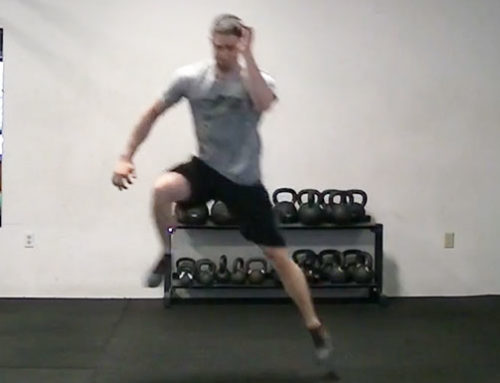Two of the most common requests I get from new clients in regards to their workout is:
I want to sweat and get sore.
My typical response is something along the lines of this…
Perhaps that will be my response when gray jumpsuits are back in fashion. However for now I take that opportunity to educate new members of Peak Condition.
Sweating provides some great health benefits such as, improved circulation and increased metabolism; however depending on your personal goals it may not be an important part of your strength training program. For example, a cyclist looking to improve their performance on the bike won’t be lifting with a continuously elevated heart rate and consequently probably won’t be dripping with sweat. Instead they will be working on gaining maximal strength and rate of force development (RFD). Which is achieved with proper programming and in the cyclist’s case involves longer rest periods (60 – 120+ sec).
On the opposite side of the spectrum is someone who doesn’t do any cardiovascular training on their own and needs it in their program. Due to time constraints they won’t be running on the treadmill for 45 minutes, instead I’d program another form of Energy System Training (EST). I use the term EST because there are many different ways to train your cardiovascular system and each way produces a different physiological effect.
The standard method that most people use is steady state cardio or as I classify it the Aerobic Energy System. However, two additional systems can be trained with “cardio” workouts: Anaerobic Alactic (also known as the Creatine Phosphate System) and Anaerobic Lactic.
I’ll cover EST in another post soon…
In the case of someone needing Aerobic training they definitely should expect to sweat and perhaps even need this headband…
Because as my wife said after watching The Avengers with me “The Hulk is my favorite!” (Which I have to say is amazing and if you have an uncontrollable fascination with superhero’s as I do, it’s a must see.)
Soreness is just as misunderstood as sweating. How fit would you feel if every time you ran/cycled or rock climbed you were unbelievably sore? Yet when it comes to strength training there can be an expectation of just that, soreness that makes it painful to move. I’m all for working out as hard as possible if that is the goal of that workout, however that doesn’t not mean that you’ll always be sore. Here is an example from one of our PC clients:
This client comes in 3 times per week. Consequently she has one day that’s primarily lower body, which is the day I’ll be talking about.
Week 1:
3 Leg exercises (Elevated Dead lifts, Squat to box, Hip Thrusts)
Total Volume (Sets x Reps x Weight): 1260 lbs
Week 2:
3 Leg exercised (Elevated Deadlights, Squat to box, Hip Thrusts)
Total Volume (Sets x Reps x Weight): 1445 lbs
There was an additional 185 lbs of work done during week 2, yet it leads to very little soreness compared to week 1. This is a perfect example of programming enabling more stress (total volume) to be put on the body which is a vital part of developing fitness without creating mass amounts of soreness. Who do you think has more lower body strength?
Stacey: Total Volume of 1260 with A LOT of soreness
Becky: Total Volume of 1445 with very little soreness
Naturally you’d say Becky, however does the lack of soreness decrease the effectiveness? No, in fact it increases it because after week 2 Becky was able to be more active without having soreness slowing her down for a couple days. Which day do you think she got a “better” workout..?
The goal should not be to be sore after every workout. The goal should be to build on your workouts to gradually increase your fitness level, regardless of your specific goals. Keep in mind that working out doesn’t increase your fitness; RESTING is where the increase in fitness is achieved. Workouts break your body down, resting builds them back up. If you are constantly breaking down the muscles with high volumes you won’t give them a chance to rebuild.







